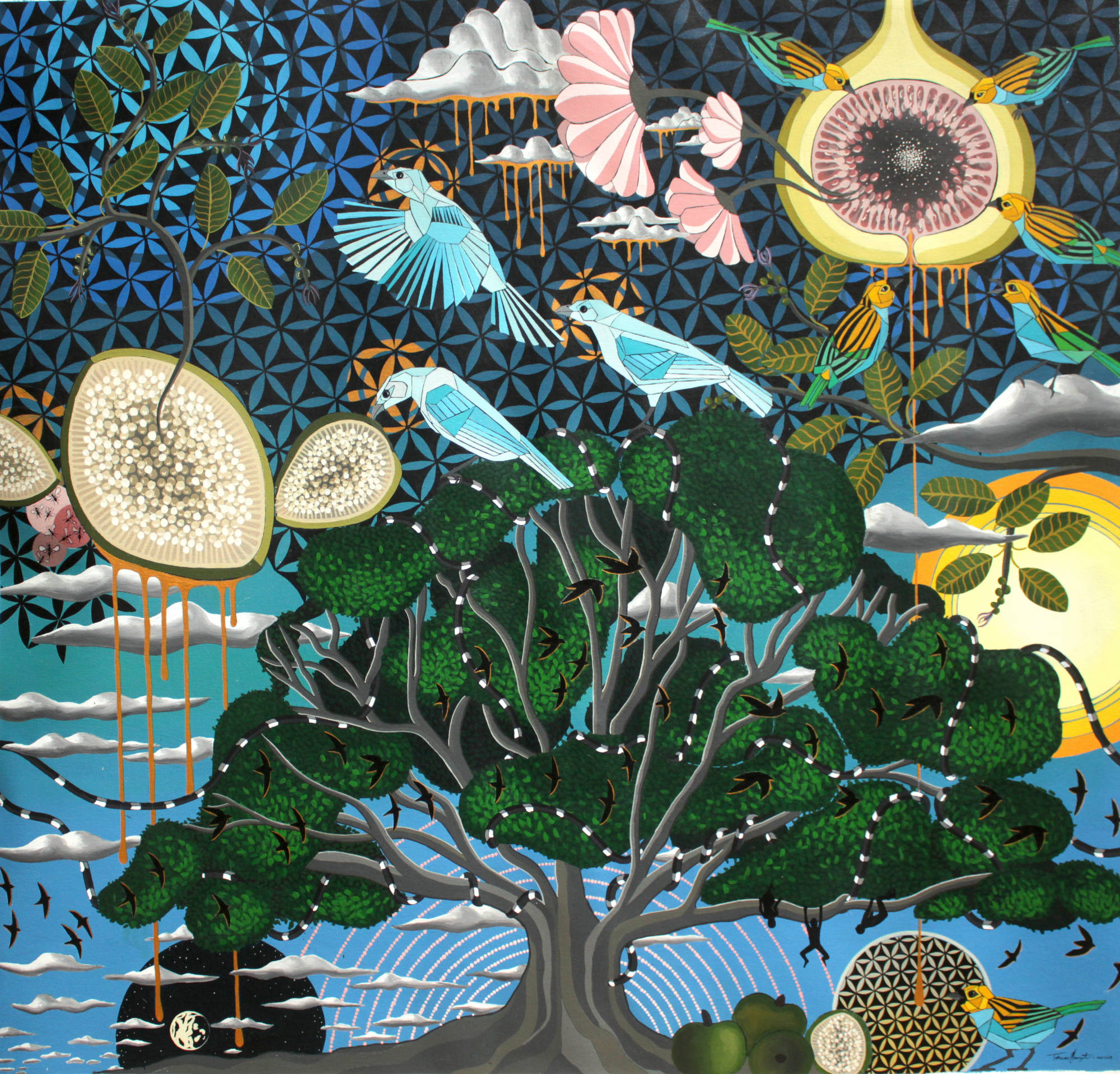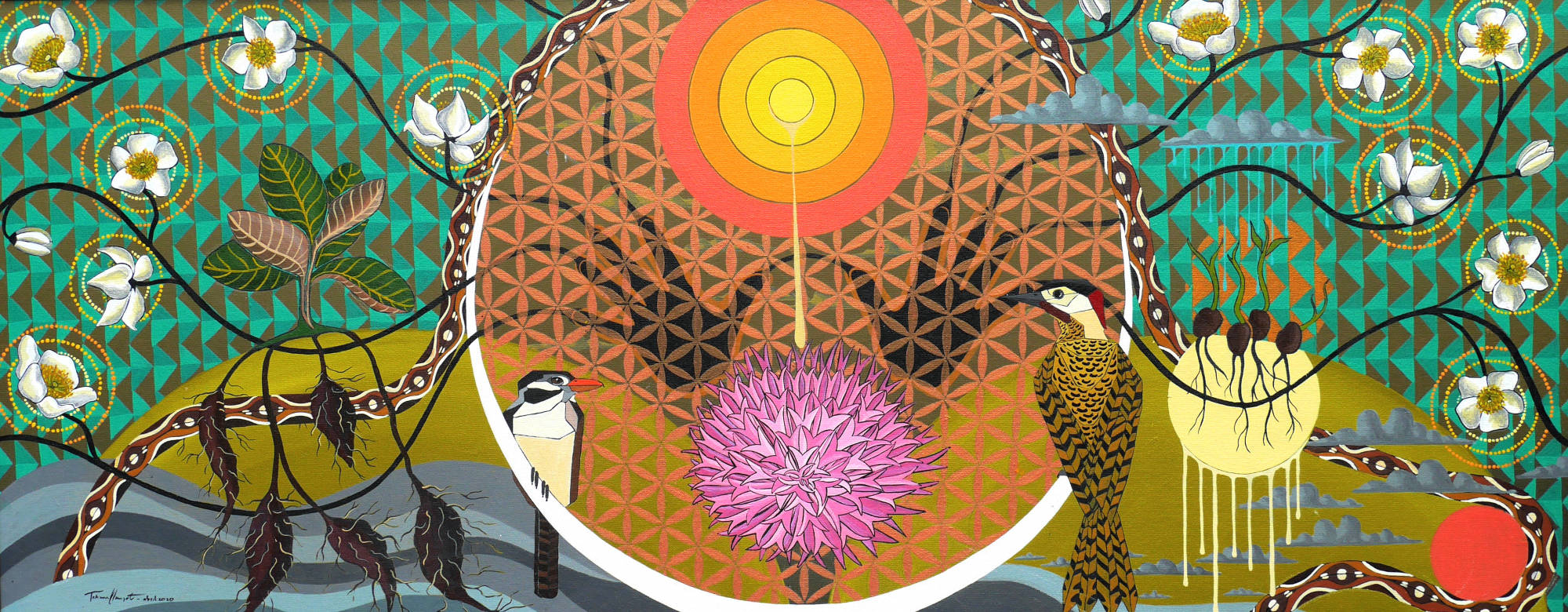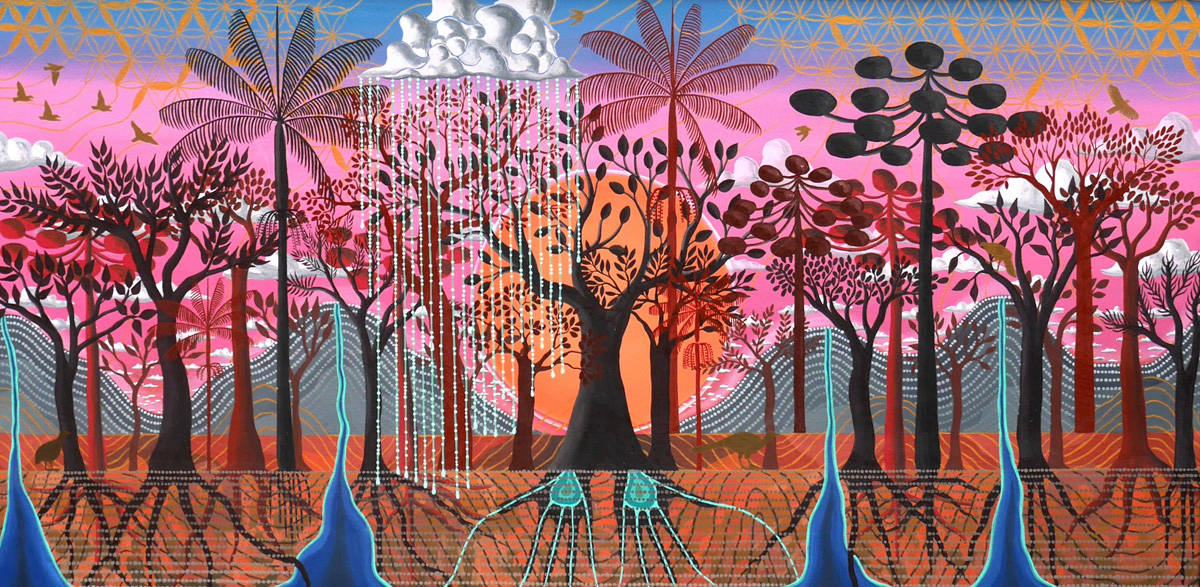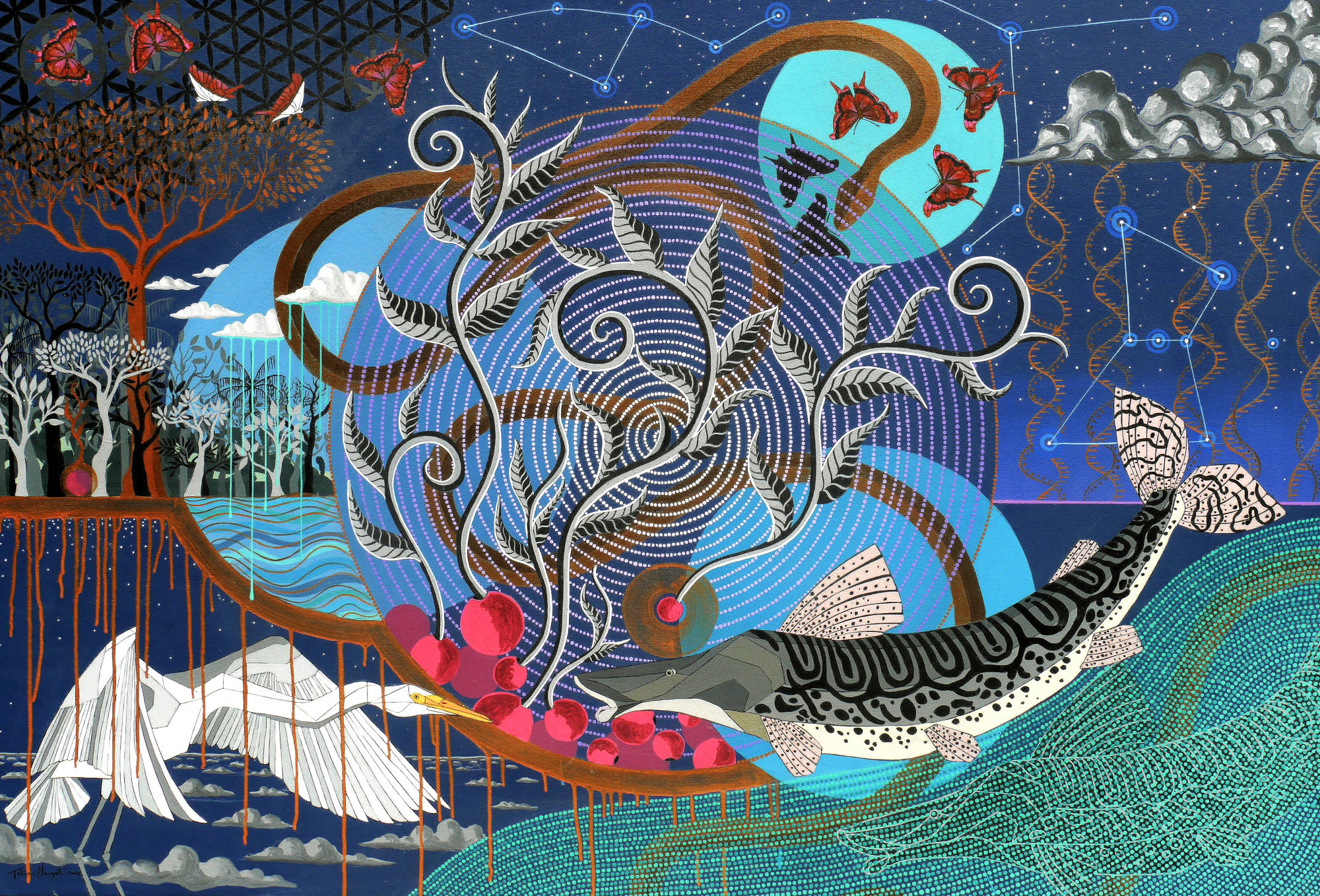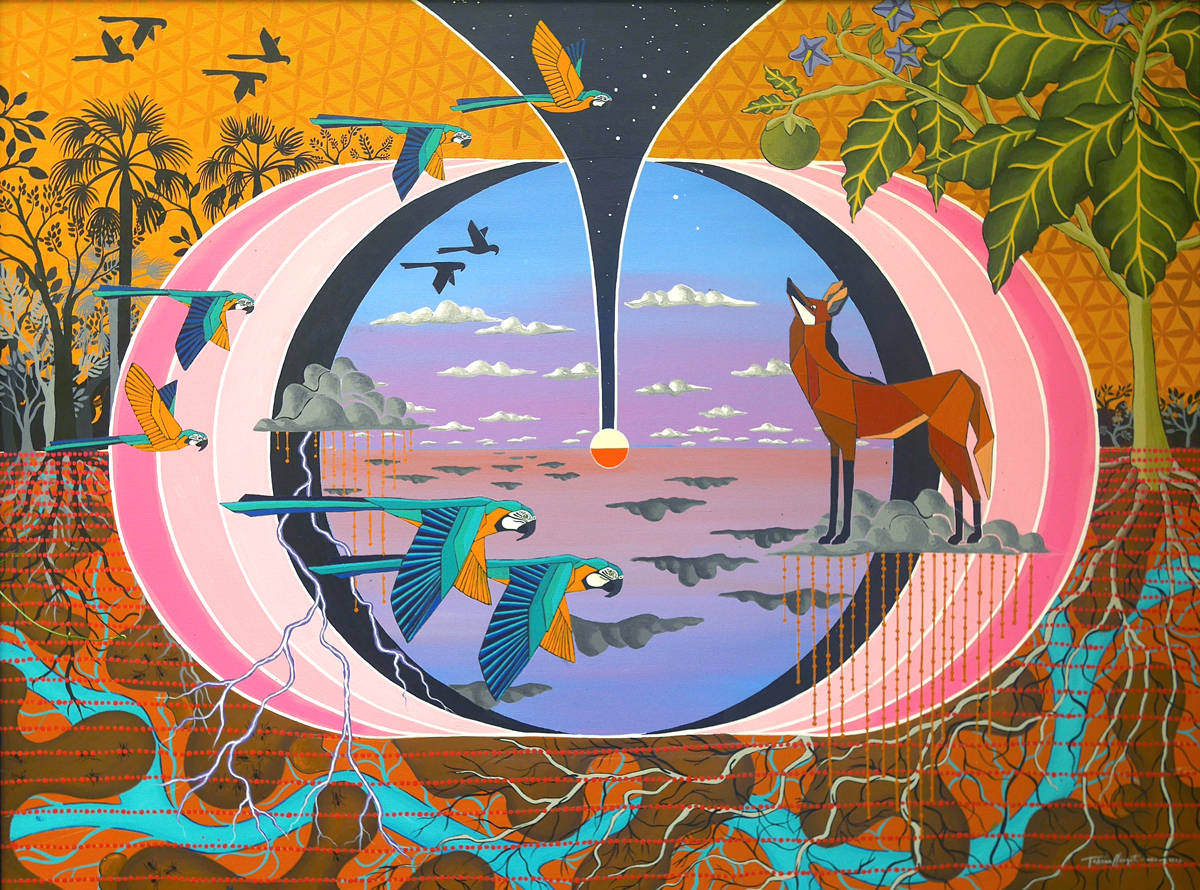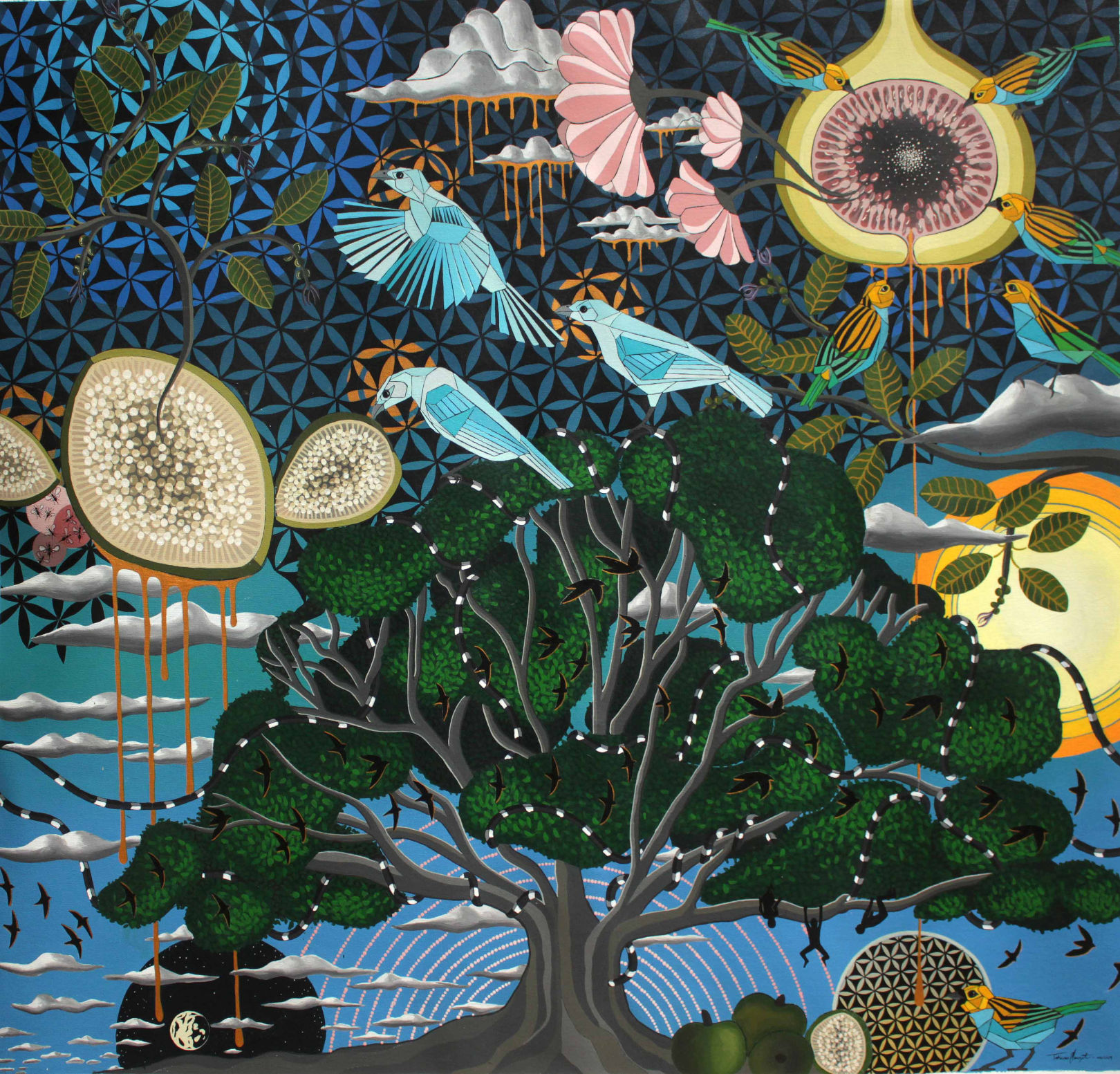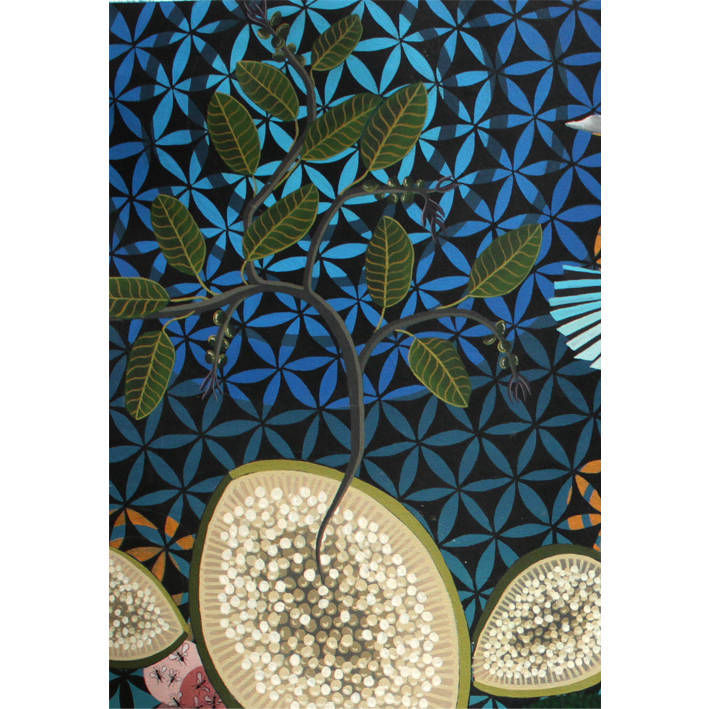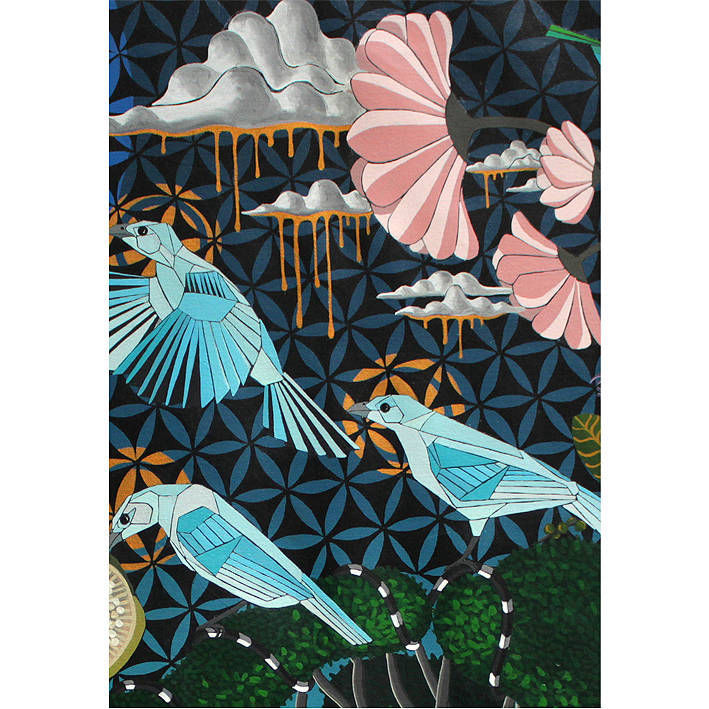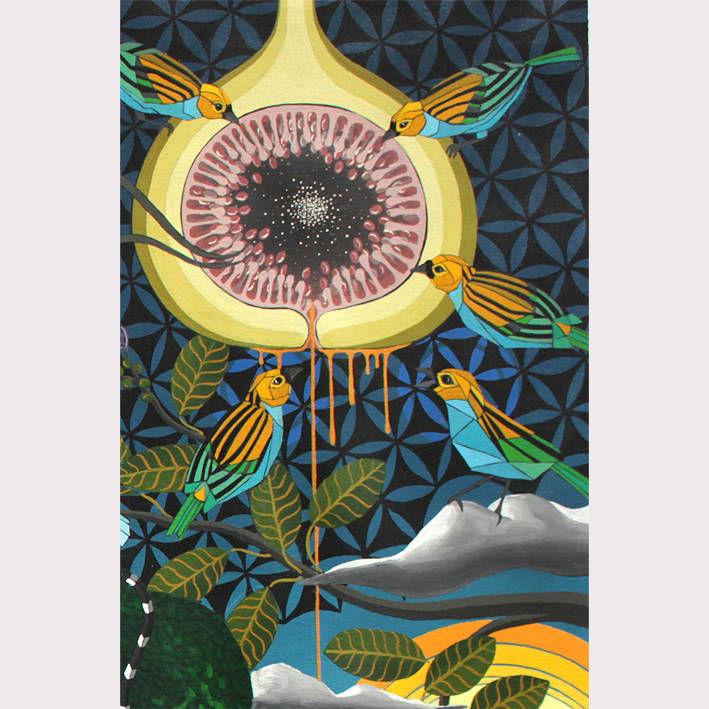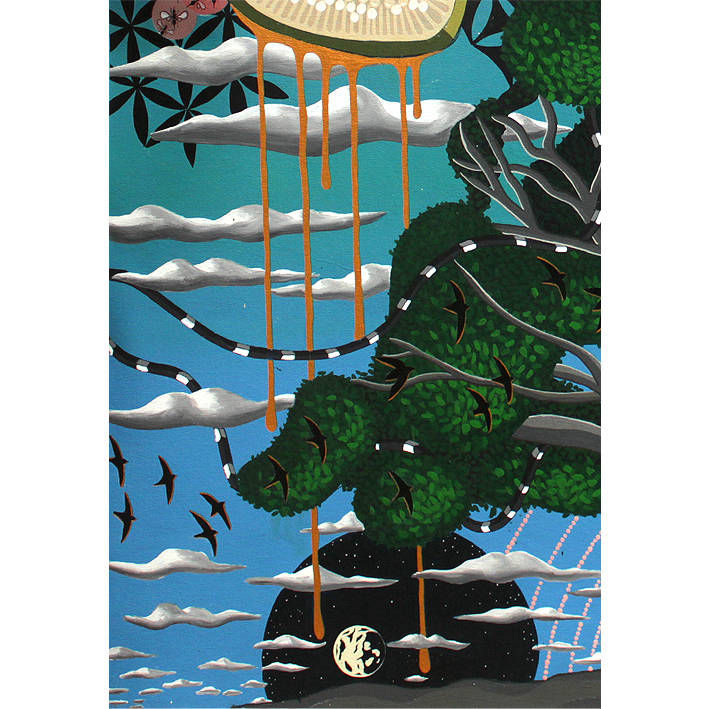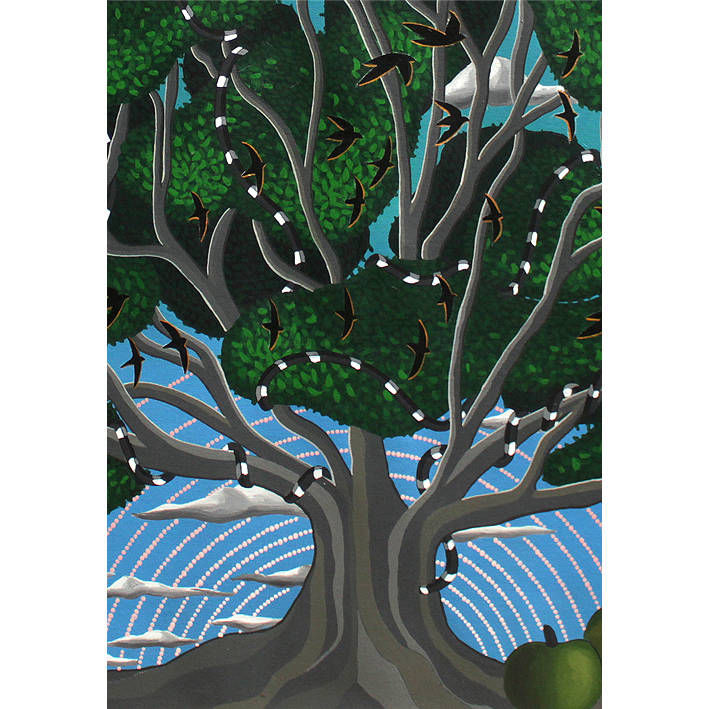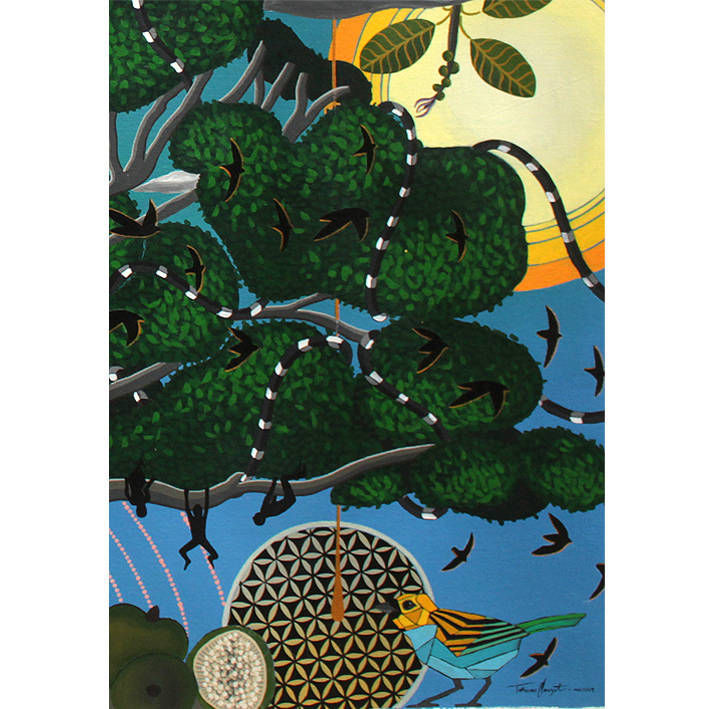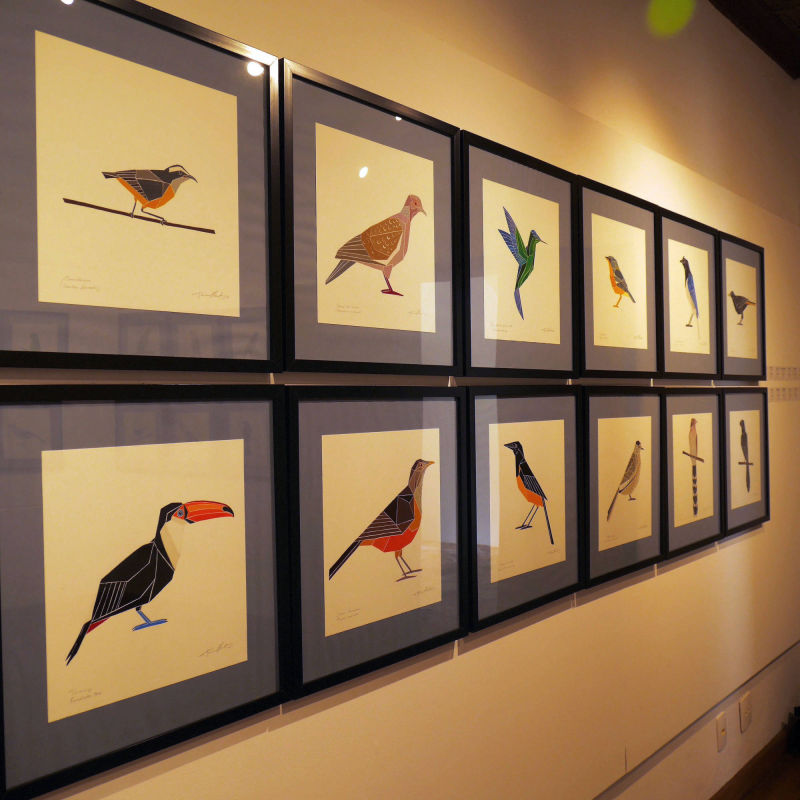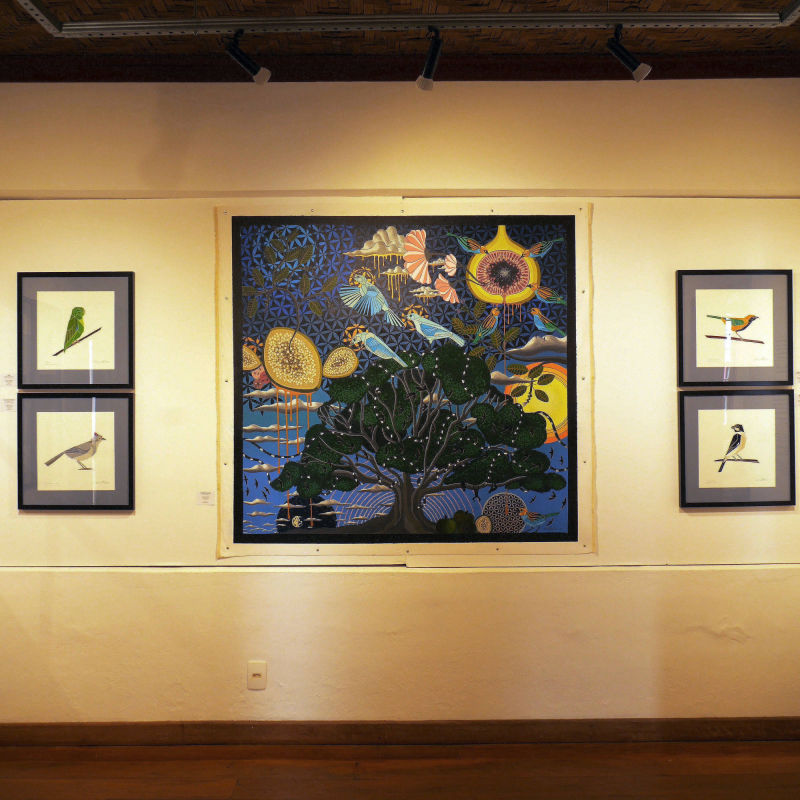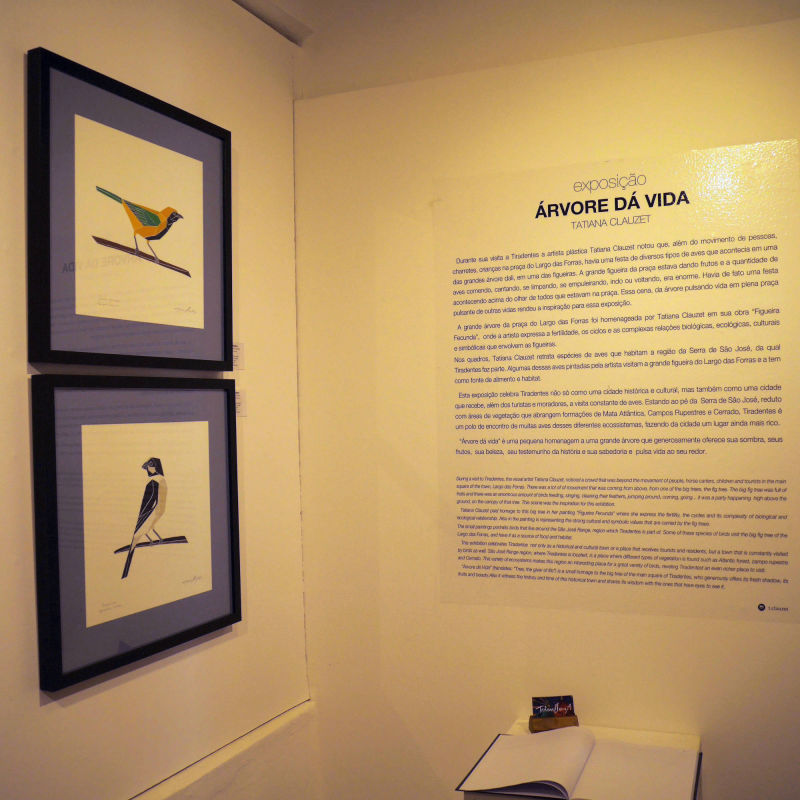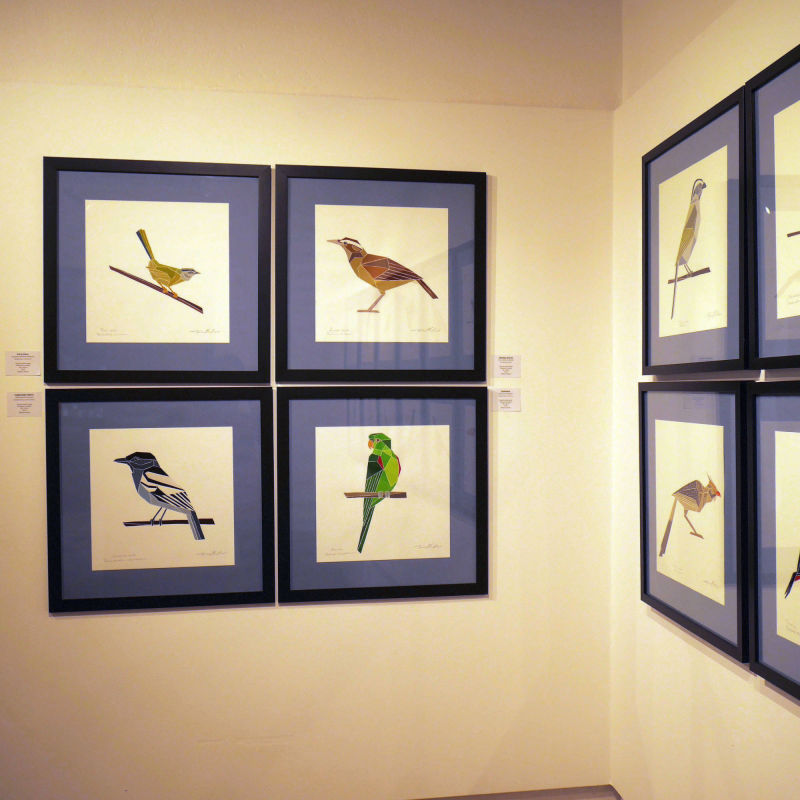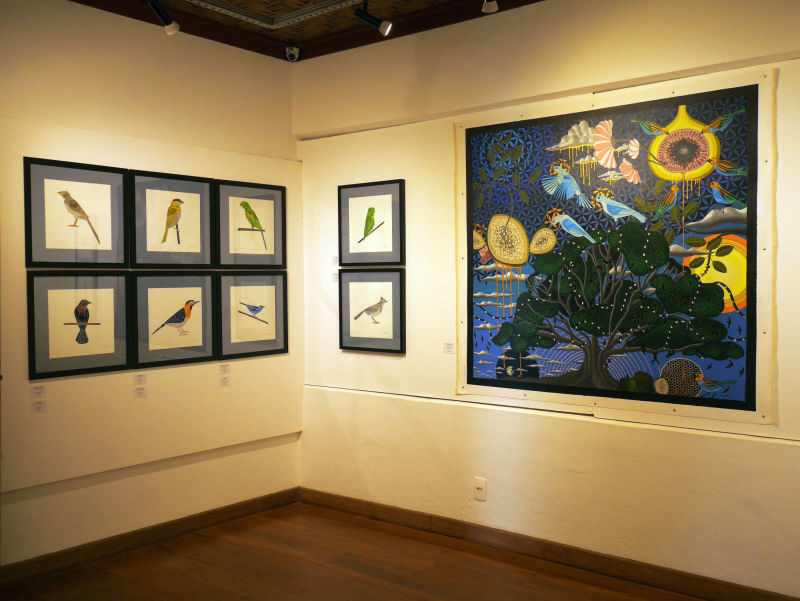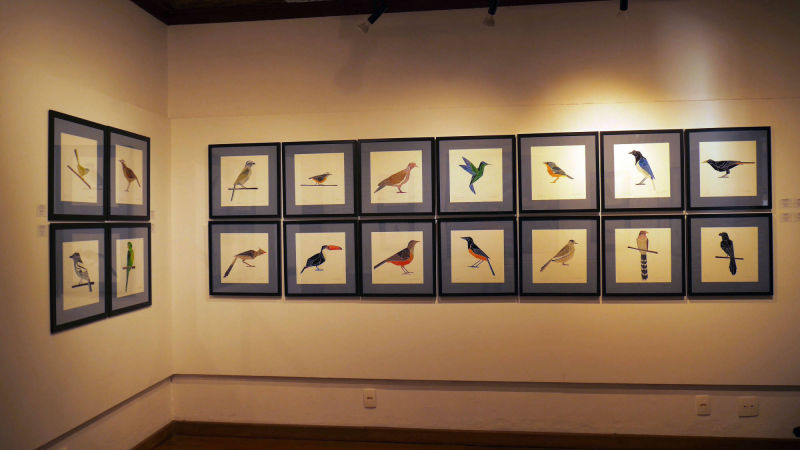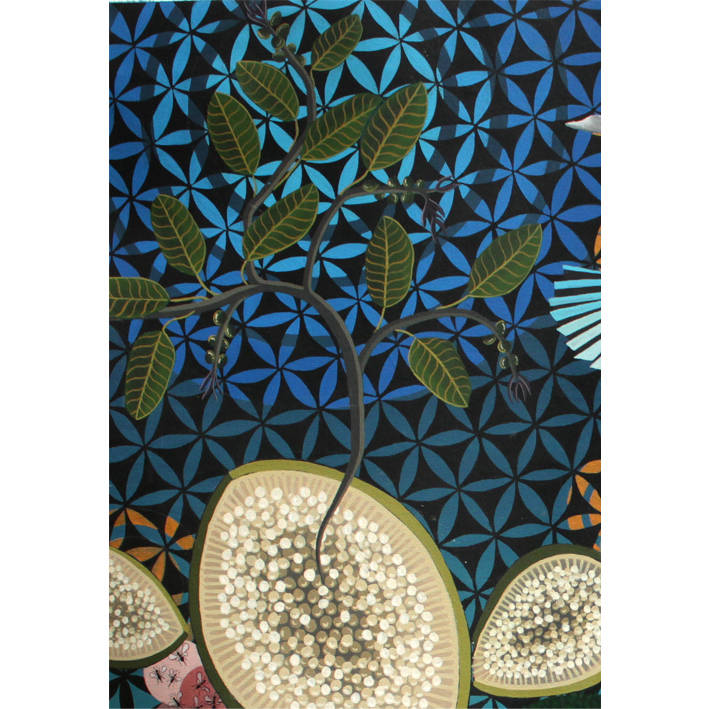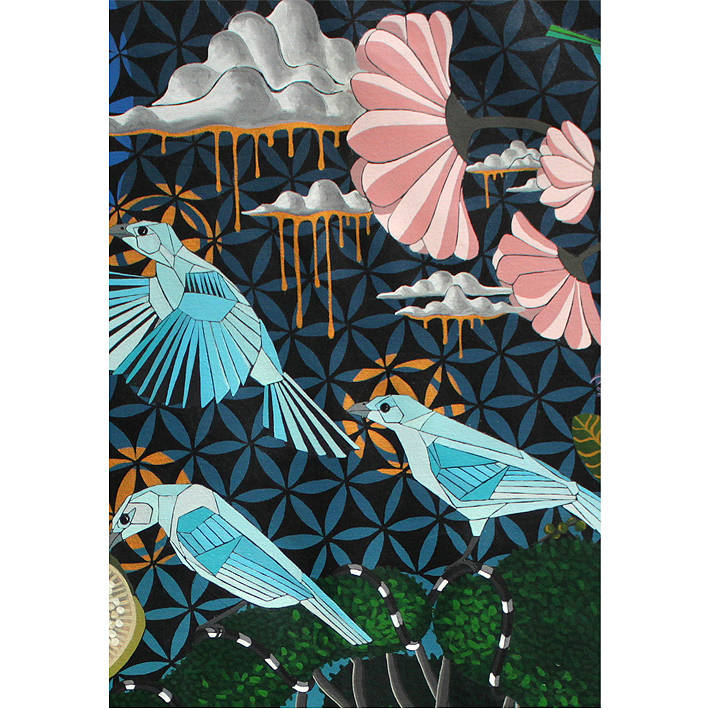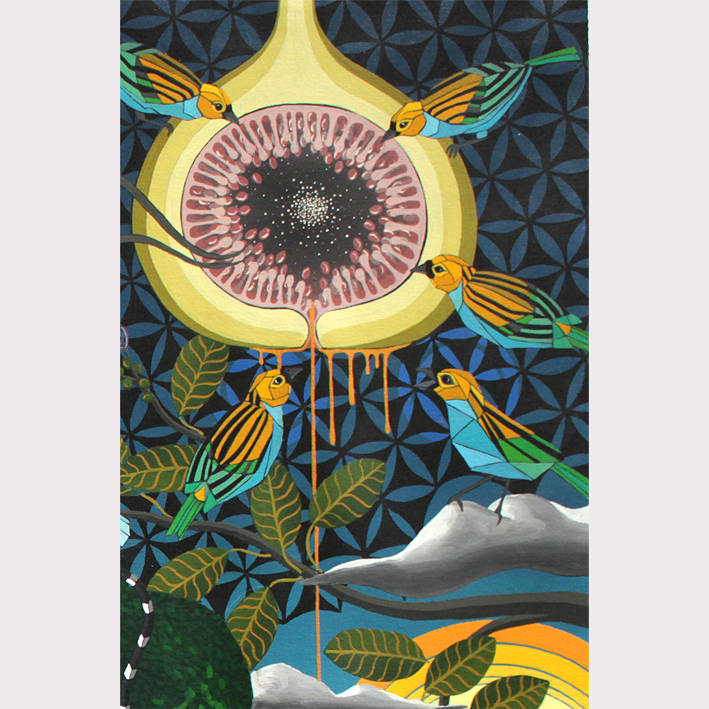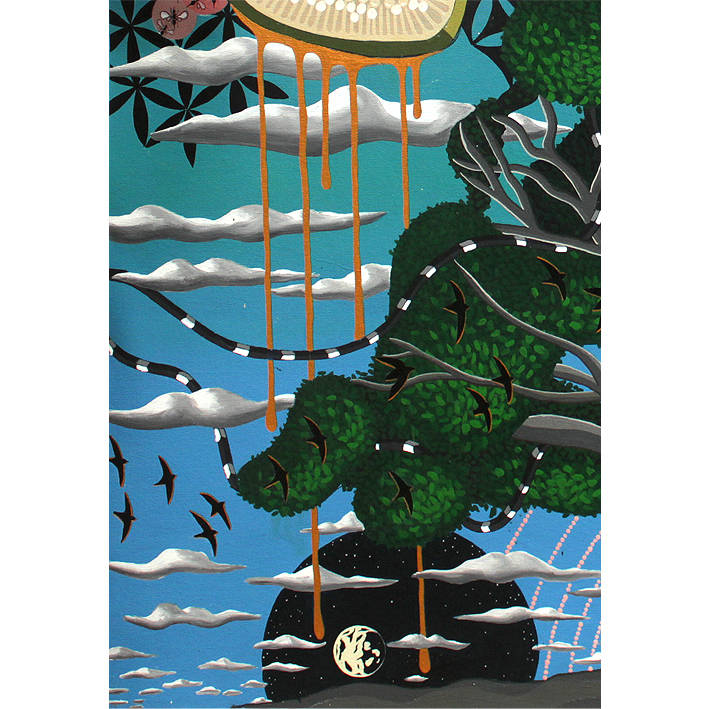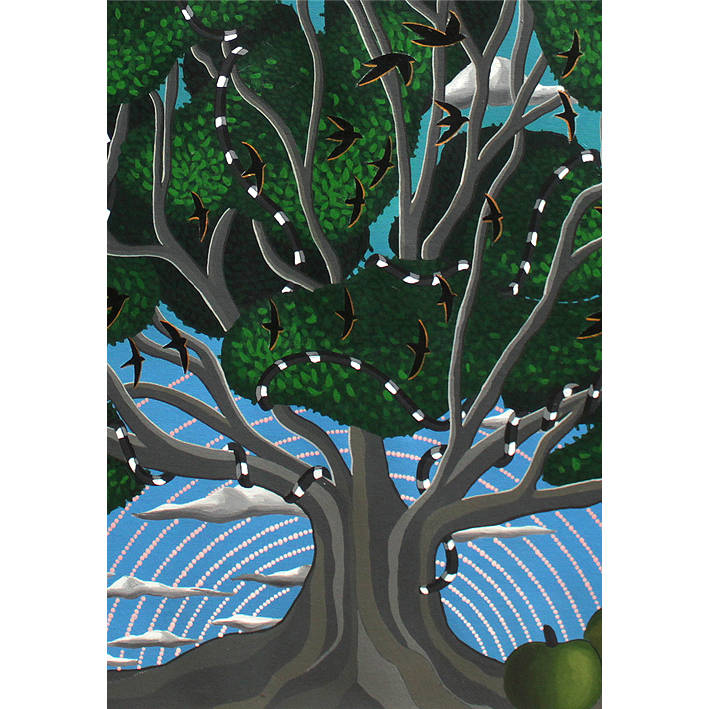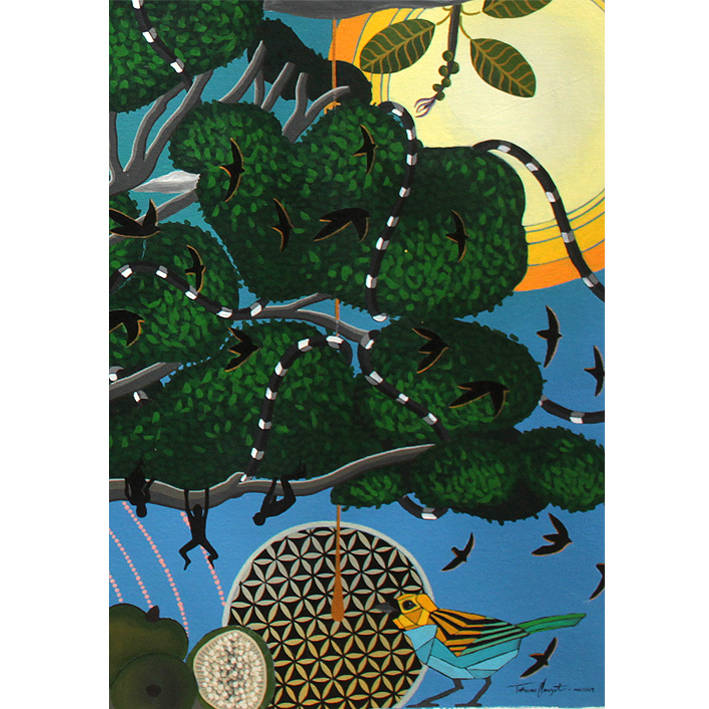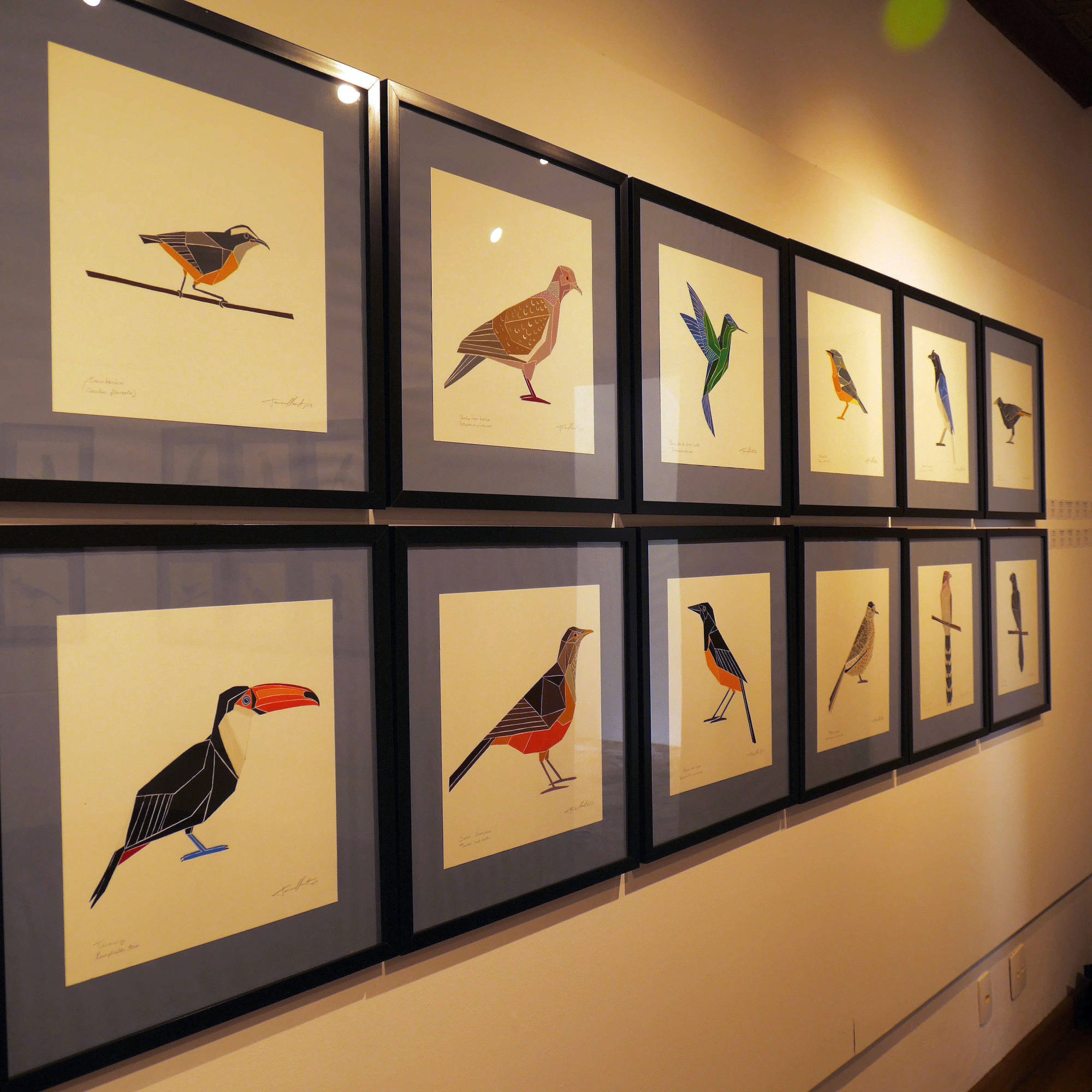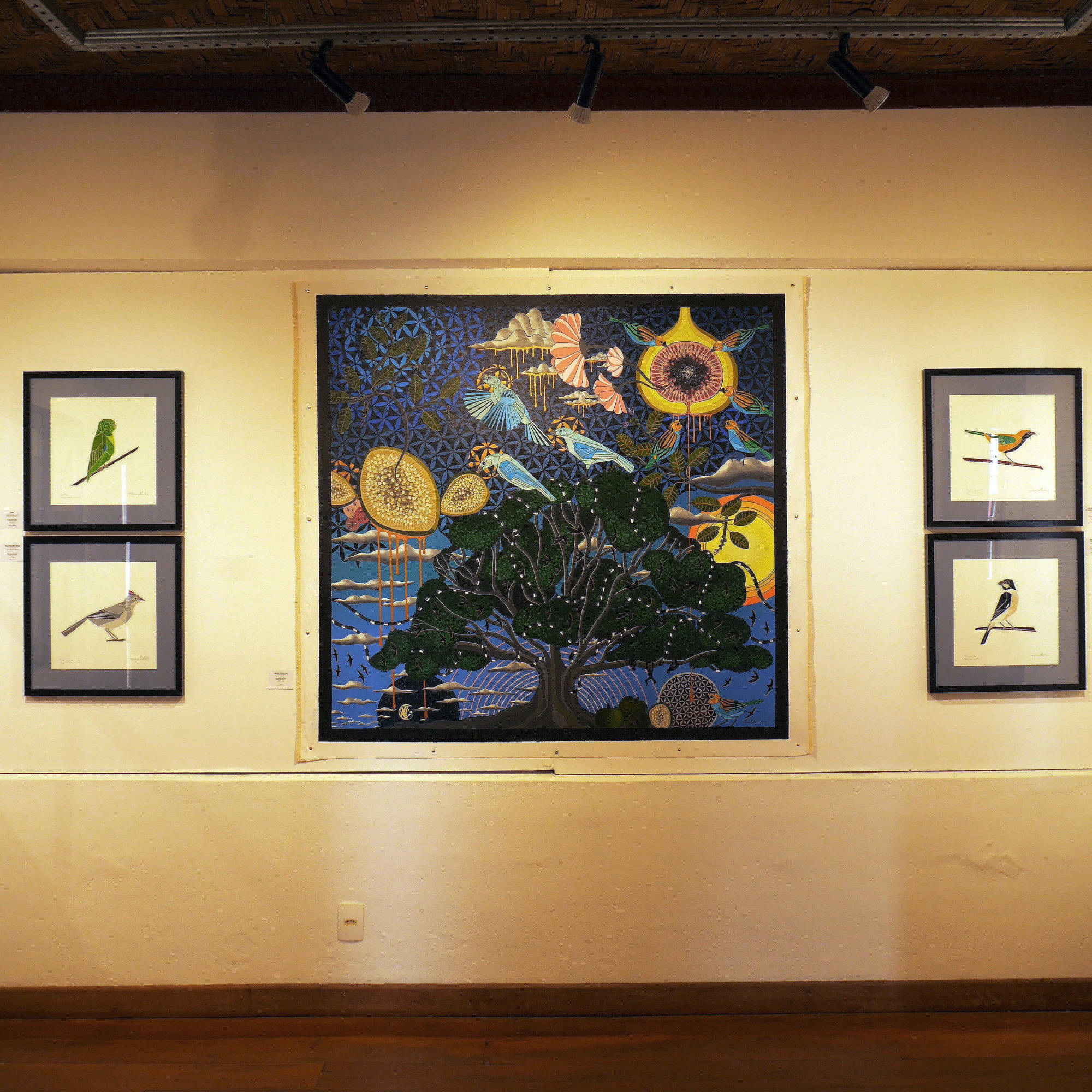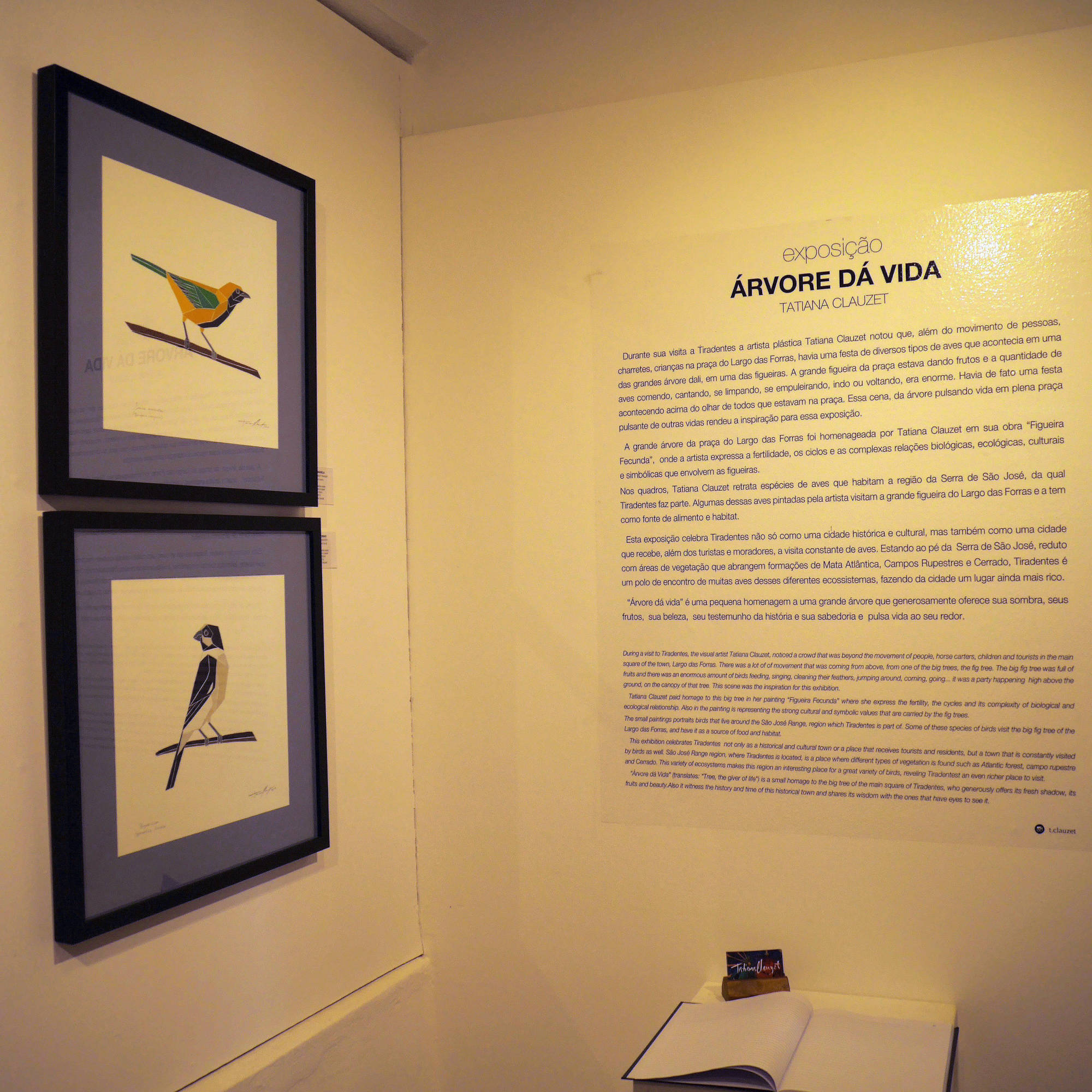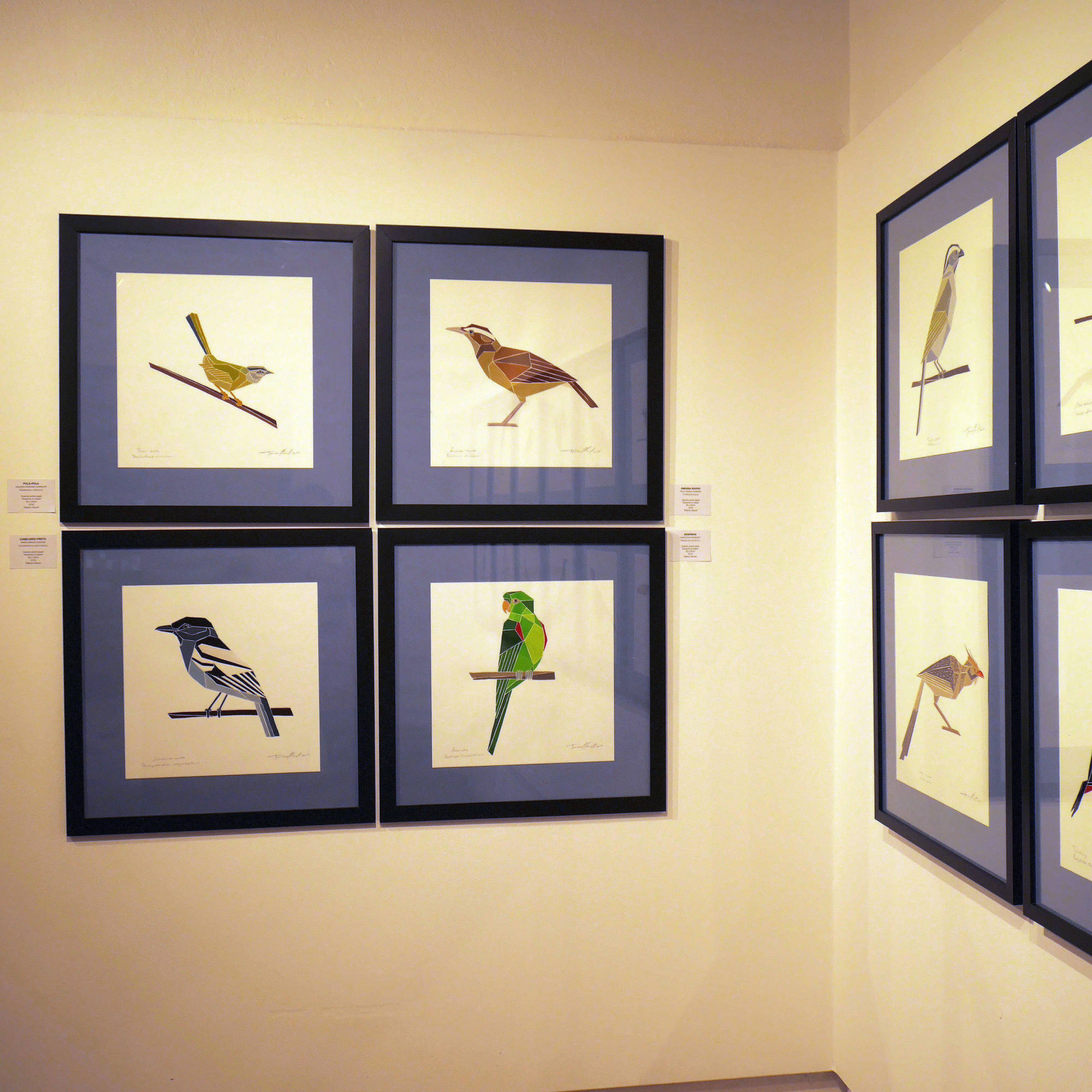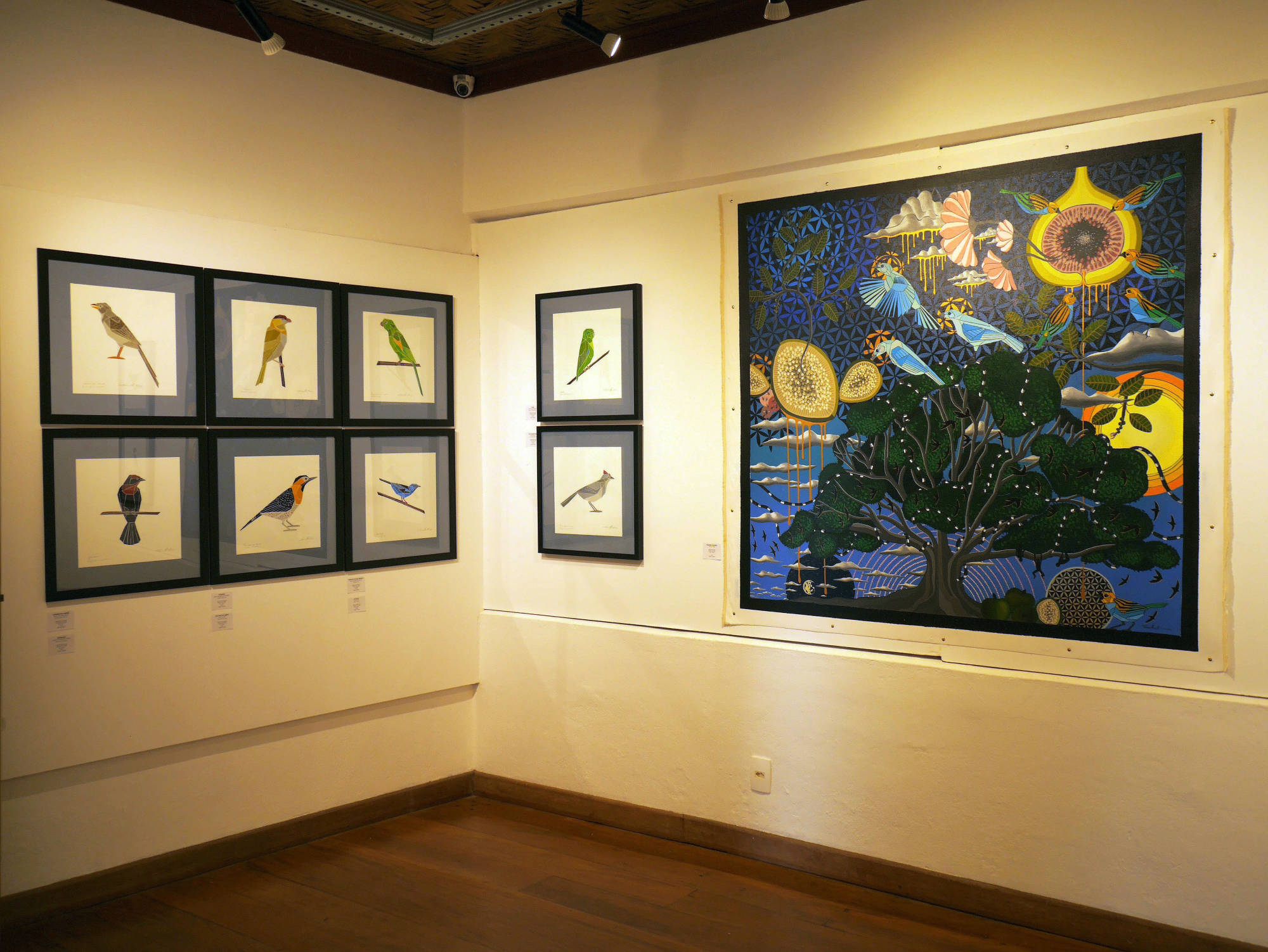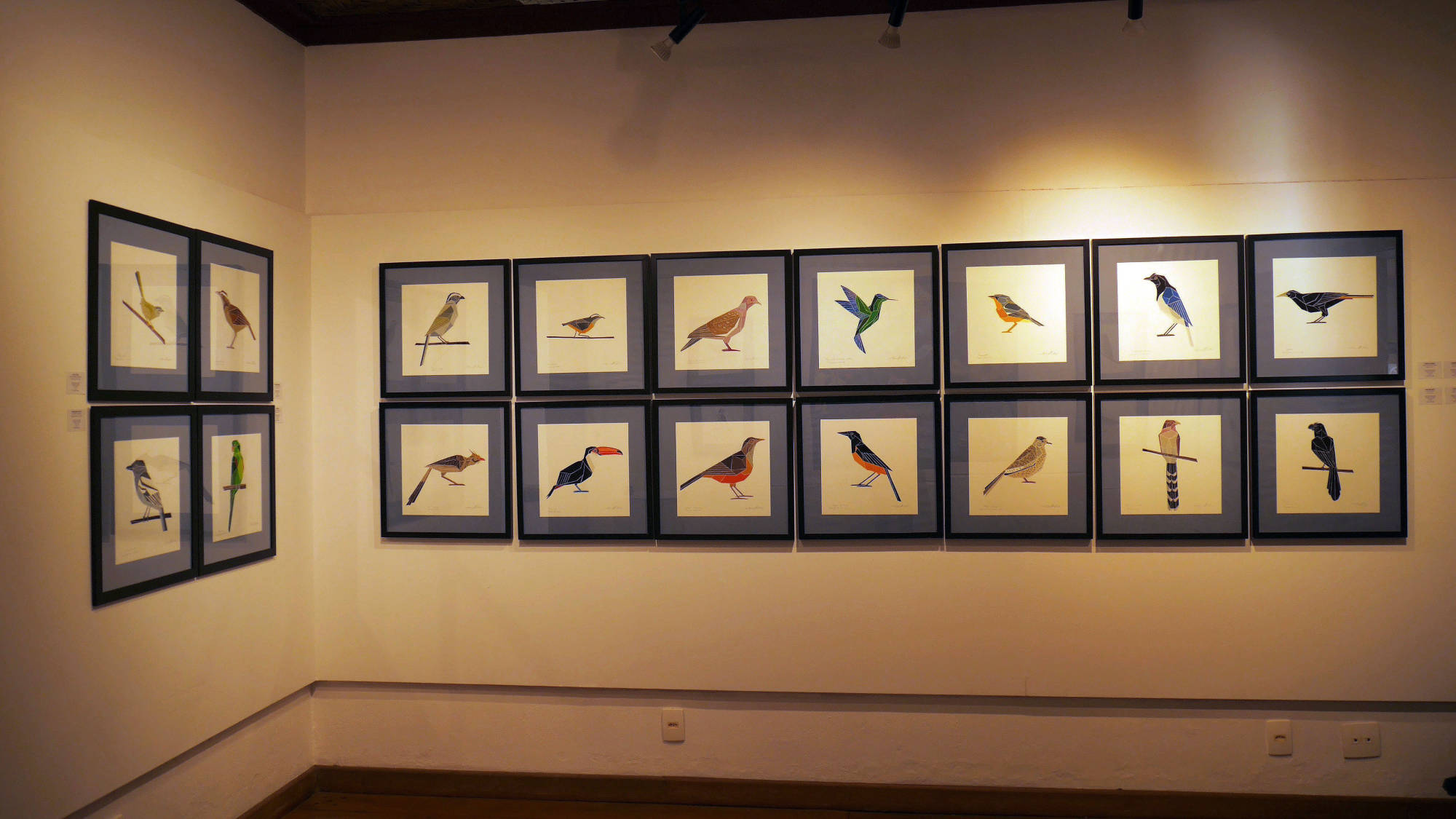exposição
ÁRVORE DÁ VIDA
Espaço Cultural Yves Alves SESI Tiradentes MG Brasil
Durante sua visita a Tiradentes a artista plástica Tatiana Clauzet notou que, além do movimento de pessoas, charretes, crianças na praça do Largo das Forras, havia uma festa de diversos tipos de aves que acontecia em uma das grandes árvore dali, em uma das figueiras. A grande figueira da praça estava dando frutos e a quantidade de aves comendo, cantando, se limpando, se empuleirando, indo ou voltando, era enorme. Havia de fato uma festa acontecendo acima do olhar de todos que estavam na praça. Essa cena, da árvore pulsando vida em plena praça pulsante de outras vidas rendeu a inspiração para essa exposição.
A grande árvore da praça do Largo das Forras foi homenageada por Tatiana Clauzet em sua obra “Figueira Fecunda”, onde a artista expressa a fertilidade, os ciclos e as complexas relações biológicas, ecológicas, culturais e simbólicas que envolvem as figueiras.
Nos quadros, Tatiana Clauzet retrata espécies de aves que habitam a região da Serra de São José, da qual Tiradentes faz parte. Algumas dessas aves, pintadas pela artista, visitam a grande figueira do Largo das Forras e a tem como fonte de alimento e habitat.
Esta exposição celebra Tiradentes não só como uma cidade histórica e cultural, mas também como uma cidade que recebe, além dos turistas e moradores, a visita constante de aves. Estando ao pé da Serra de São José, reduto com áreas de vegetação que abrangem formações de Mata Atlântica, Campos Rupestres e Cerrado, Tiradentes é um polo de encontro de muitas aves desses diferentes ecossistemas, fazendo da cidade um lugar ainda mais rico.
“Árvore dá vida” é uma pequena homenagem a uma grande árvore que generosamente oferece sua sombra, seus frutos, sua beleza, seu testemunho da história e sua sabedoria e pulsa vida ao seu redor.
During a visit to Tiradentes - a small beautiful historical town of Minas Gearis state in Brazil- , the visual artist Tatiana Clauzet, noticed a crowd that was beyond the movement of people, horse carters, children and tourists in the main square of the town, called Largo das Forras. There was a lot of of movement that was coming from above, from one of the big trees of the square. It was coming from a fig tree. The big fig tree was full of fruits and there was an enormous amount of birds feeding, singing, cleaning their feathers, jumping around, coming, going... it was a party happening high above the ground, on the canopy of that tree. This scene was the inspiration for this exhibition.
Tatiana Clauzet paid homage to this big tree in her painting “Figueira Fecunda” where she express the fertility, the cycles and its complexity of biological and ecological relationship. Also in the painting is representing the strong cultural and symbolic values that are carried by the fig trees.
The small paintings portraits birds that live around the São José Range, region which Tiradentes is part of. Some of these species of birds visit the big fig tree of the Largo das Forras and have it as a source of food and habitat.
This exhibition celebrates Tiradentes not only as a historical and cultural town or a place that receives tourists and residents, but also a town that is constantly visited by birds as well. São José Range region, where Tiradentes is located, is a place where different types of vegetation is found such as Atlantic forest, campo rupestre and Cerrado. This variety of ecosystems makes this region an interesting place for a great variety of birds, reveling Tiradentest an even richer place to visit.
“Árvore dá Vida” (translates: “Tree, the giver of life”) is a small homage to the big tree of the main square of Tiradentes, who generously offers its fresh shadow, its fruits and beauty. Also it witness the history and time of this historical town and shares its wisdom with the ones that have eyes to see it and heart to feel the pulse of life.
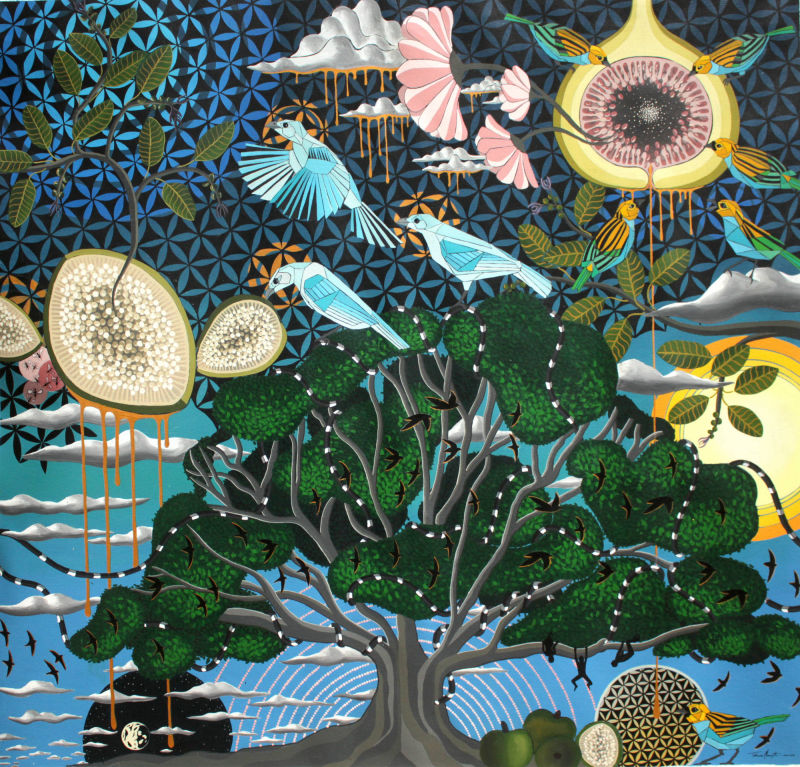 "FIGUEIRA FECUNDA" • "FERTILE FIGTREE"
"FIGUEIRA FECUNDA" • "FERTILE FIGTREE"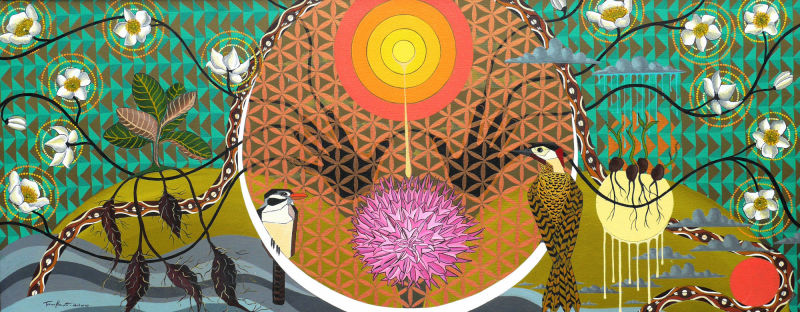 "TERRA TENRA" • "GENTLE EARTH"
"TERRA TENRA" • "GENTLE EARTH" 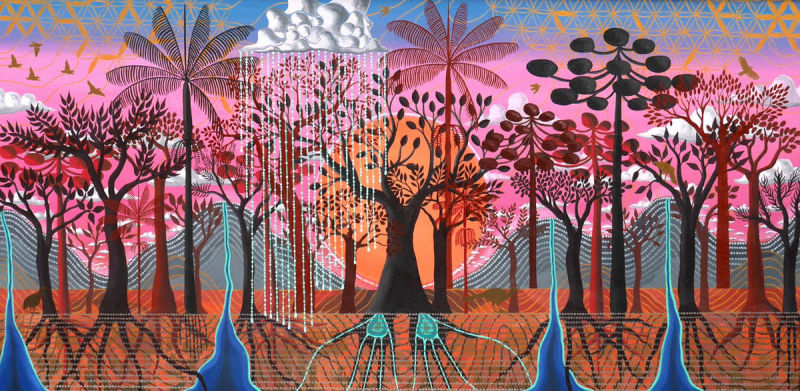 "AMA DÁGUA"
"AMA DÁGUA"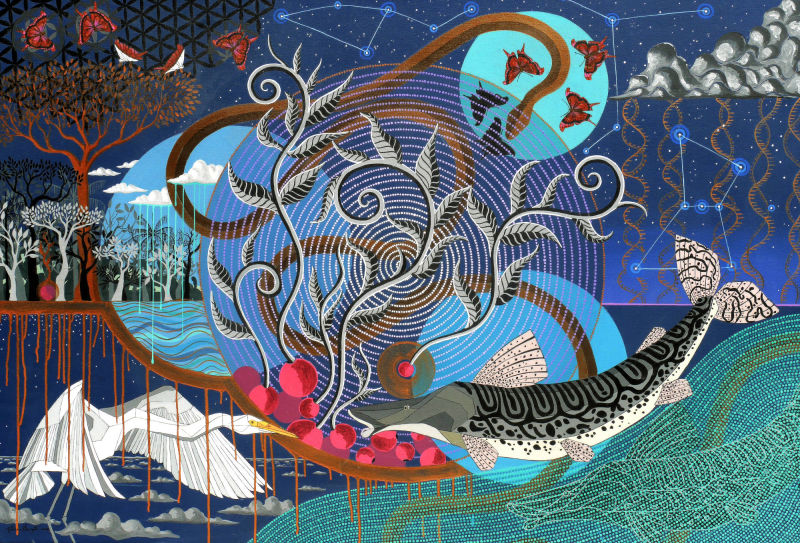 "RIO DO INCONSCIENTE" • "RIVER OF THE UNCONSCIOUS"
"RIO DO INCONSCIENTE" • "RIVER OF THE UNCONSCIOUS" 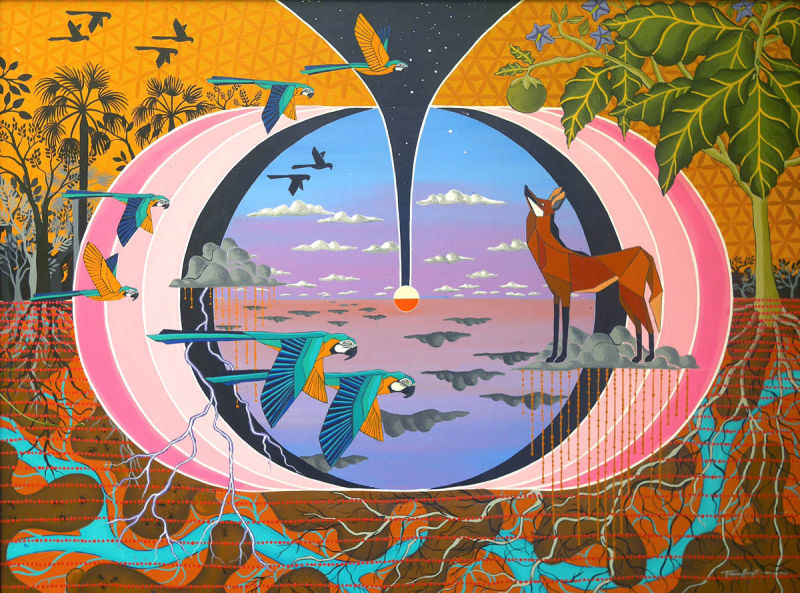 "AMA DÁGUA"
"AMA DÁGUA"